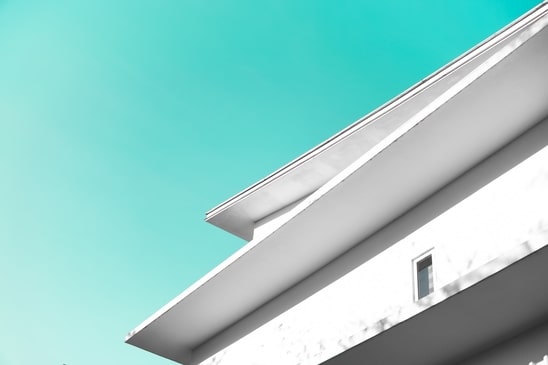Problems with Conservatory or House Gutters – Box, Concrete, Cast Iron or Plastic Guttering

As a typical house or conservatory owner, you probably don’t spend your days thinking of gutter problems and health, right?
Do you focus on rainwater slides only when something is wrong?
That might not be the best way to approach gutter maintenance.
Since all types of gutters serve the crucial purpose to channel water away from the foundation of your house, it’s crucial not to leave pipes and brackets at chance.
As a professional gutter maintenance company with years-long of experience, at Gutters London we advocate the use of a regular schedule to help you prevent all common conservatory and house guttering problems before they even happen!
That being said, what are the most common gutter problems house owners face?
But first,
What Are Boxed or Concealed Gutters?
Box gutters have a levelled, classic four-corner base. The foundation has a box-like cross-section. Boxed gutters, also known as concealed gutters, keep a high edge throughout their entire length.
Concrete Guttering Problems:
- Bad aesthetics;
- Leaking where the joints are;
- Displacement above a window;
- Thermal bridging.
Problems with Cast Iron Guttering
You can overcome these by thinking in advance.
1. Gutters can Leak behind the Hopper Head
Cast iron guttering problems mean they discharge and trackback down the underside of the gutter itself.
Solutions:
- Fit a gutter bolt through it at the lowest point and over the hopper head. It will form a drip.
- Seal your gutters right.
2. Use a Single Gutter Bracket throughout your Entire Gutter Length
One part of the gutter will be completely dependent on its neighbour. While that may work fine, it makes gutter repairs difficult.
If the gutter breaks because of old age or snow damage, it can lead to a domino effect that will damage the rest of your guttering. Use extra brackets to prevent problems or set the stage for professional gutter repairs.
3. Installation of an Inadequate Gutter System
A problematic or nonexistent gutter system will damage your foundation and siding during rainstorms.
Box Guttering Problems?
It is the shape and structure that plays the key role here.
Water Running Behind the Gutter
If this happens, water can enter your property, damage the ceiling, exterior wall or the trim.
Such a guttering problem happens when box gutters had a poor design and the rear edge is higher than the one behind.
Overflow and water damage, in this case, means that the water rises in the box gutter. Instead of it spilling over the front and on the sidewalk, it spills through the back, into the building.
Here are the signs of that happening to you:
- Water spots or damage on your walls and ceiling;
- Outside bricks turning white;
- Paint staining or peeling off;
- Exposed brick discolouring or turning white.
Need of Painting Gutters? A Guide on How to Repaint.
Thermal Bridging
In terms of problems with guttering, this occurs because of the concrete Finlock Blocks bridge. You have it from the outside to the inside of the cavity. The wall underneath it breaks thermally by a cavity. It works inside-out.
Insulating material fills it retrospectively. However, you cannot cure thermal bridging by relining. Therefore, the only option is removal.
Gutters Clogged or not Draining
Gutters that cannot drain as they should be will end up blocked and will overflow during a rainstorm. Water, and debris, can cause damage to your foundation, leading to internal guttering problems.
If you feel that the amount you are dealing with is higher than normal, consider installing gutter guards to fix your guttering drainage problems.
Also, if you can’t clean gutters without a ladder, carry regular gutter cleaning so clog won’t build up!
Guttering has a Problem with Improperly Pitched Slopes
The gutter slope is also known as the ‘pitch.’ It defines how much your gutters slant downward to allow water to flow. Naturally, if guttering does not slope correctly, water will pool instead of flowing and eventually spillover. At the same time, though, if your gutters have a slope too sharply, they won’t function properly either.
Therefore, here is the general rule. Slope your gutters at 1/4th-inch per 10 feet.
Testing is easy.
- Climb on a ladder after a rainstorm.
- Readjust the guttersiIf the water pools.
It might be as simple as bending them back in place. But it could also mean you have to reinstall the hangers completely as part of your roof guttering problems.
Bad Downspout Draining
Your spouts will also have to point in a specific direction.
If they drain too close to your home, you might face pools of water. Therefore, install them several feet away from the house where the water cannot do any damage. An alternative is the use of rain chains but those have disadvantages of their own.
Plants Growing in the Gutter System
If the gutters clog up with debris such as twigs, leaves, seeds, bird droppings, and water, it can cause a small crop of vegetation growing there. If it also has a chance to bask in plenty of sunlight, it will grow before you know it.
It might not seem like much, but fresh vegetation in yours gutters will weigh them down, separate the joints, and clog the system.
Luckily, the solution is very simple. Always keep your gutters clean!
Gutters are Sagging
Building on the above, extra weight from water and debris can cause your gutters to sag. The problem can be caused by loose hangers or the hardware pieces which should secure guttering to the house.
If they cannot hold the extra weight anymore, they will pull out of the wall, especially if you have terraced house guttering problems.
Displacement Above Windows
The main cause is poorly fitted PVCu replacements.
Some window installers have a hard time to recognise that the original windows support the cantilevered concrete blocks above the window heads in part.
There is a lintel tray above the inner leaf of the cavity wall. It is filled with concrete or mortar and has a few steel bars running through it, put in indifferently sometimes. The solution is to retighten the screws.
If the problem is in hangers too far apart, install new ones and place those closer together.
Gutter Joint Separation
The gutters’ joint areas can separate easily because of the extra weight due to water and debris.
Please keep in mind that glue and caulk are not an optimum solution for this problem. They won’t prove strong enough to hold two pieces of gutter together. However, you can use rivets.
Drill holes into the overlapping edges of your gutter sections. Insert 1/8th-inch rivets. They will join your gutters securely.
Damage to the Box Gutter Trim
This is the worst-case scenario when it comes to box gutters. If the seal is broken, water flows behind the gutter and can damage your ceiling and walls.
As usual, this is a problem because of bad design. If the box gutters are correct, and the front is not lower than the back, this error of overflowing should not appear.
Broken Guttering Problems
This is an instance when the weather is the main culprit. Meaning that a heavy windstorm or rainstorm can knock down or damage your gutters. As a result, you could just have to reattach them. But you might also have to replace certain sections altogether.
The only thing you can do to prevent this problem from happening is to attach your gutters as safely as you can to the side of the house.
The Problem of Ice Dams
Here is a niche problem for homeowners who live in very cold climates. Snow melts off your roof and the resulting water pools in your gutter. However, once there, it freezes again. The ice layers as the same thing happens again and the result is.. an ice dam.
It will weigh down the gutter and even tear it away from the house. Therefore, you will have to fix it but you might also need to insulate your attic and repair your roof as a result of the problematic ice dams.
A Few Final Words
To make sure your gutters are free of debris, clean them twice a year. Once in late fall after all the leaves have fallen and once again in spring to take care of April showers. You can personalize this schedule depending on the climate where you live.
Use caulk to repair leaks and a patching kit for larger holes. You can find them at your local hardware store. Be careful to use the exact same material as the one in your gutter. Using different ones can lead to erosion.
